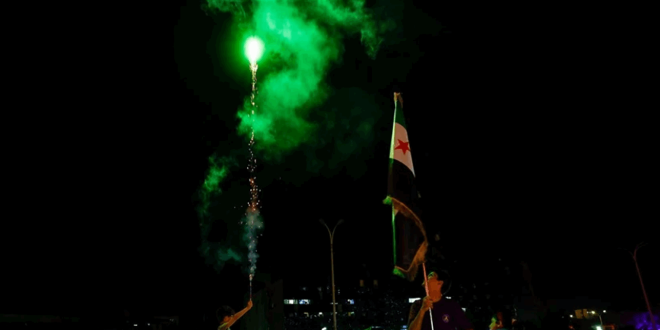لماذا رفعت الولايات المتحدة العقوبات عن سوريا؟ الأسباب والشروط والتداعيات الإقليمية
أوضح موقع 24.ae أن العقوبات على سوريا كان من الممكن أن تستمر لسنوات طويلة بسبب عدة اعتبارات منها غموض المستقبل السياسي في البلاد، والتحفظات على القيادة الجديدة، إضافة إلى المخاوف التي تعبر عنها بعض القوى الإقليمية مثل إسرائيل. فالولايات المتحدة الأميركية لا ترفع الحظر إلا بعد اختبار دقيق وطويل، كما شهدنا في تجارب سابقة مع طالبان، التي لا تزال أفغانستان تخضع لعقوبات اقتصادية منذ أربع سنوات.
تزامن إعلان رفع العقوبات مع مساعي اللجوء إلى الرئيس الأميركي دونالد ترامب عبر قناة موثوقة هي السعودية، حيث كانت الرياض نقطة الانطلاق لأقصر الطرق نحو هذا القرار. إلا أن الخطوة تتطلب جهودًا مكملة من حكومة الشرع السورية التي عليها أن تقدم المزيد من التطمينات حول احتواء القوى المحلية، وحماية الأقليات، وبذل مزيد من الجهود لمحاربة الفكر المتطرف الذي قد يهدد سلطة الحكومة نفسها.
يركز معارضو رفع العقوبات على اعتبار أن النظام الجديد في سوريا هو تنظيم مصنَّف إرهابيًا، ويجب عليه إثبات عكس ذلك، ووضعت الحكومة الأميركية خمسة شروط رئيسية لرفع العقوبات كما أشار ترامب بعد لقاءه مع الشرع، منها: إخراج المقاتلين الأجانب، المساعدة في محاربة التنظيمات الإرهابية، إبعاد التنظيمات الفلسطينية، تولي إدارة مراكز احتجاز مقاتلي “داعش”، وإقامة علاقات مع إسرائيل.
ولكن لماذا يستحق النظام السوري الجديد فرصة؟ يرى البعض أن حكومة الشرع هي واقع لا يمكن تجاهله، وأن تغيير النظام أو العودة إلى الحرب غير واردة، وأن الشعب السوري يستحق الخروج من النفق المظلم.
من جهة أخرى، يُعد إبعاد النفوذ الإيراني من سوريا خطوة ذات قيمة تاريخية في المنطقة، إذ غيّر التوازنات لصالح الدول العربية المحيطة، وحرر شمال سوريا ولبنان وفلسطين من تأثيرات مدمرة. وبالمقابل، فإن إضعاف النظام الحالي قد يعيد إيران إلى المشهد من بوابة الفوضى أو ضعف دمشق.
ويرى المتابعون أن رفع العقوبات يُعد قرارًا يمكن التراجع عنه إذا لم تلتزم دمشق بوعودها، أما عدم رفعها فقد يؤدي إلى تصعيد التوتر والفوضى ودفع دمشق نحو محاور أخرى تزيد الصراعات الإقليمية.
أما إسرائيل، فتعتبر اللاعب الأبرز في المنطقة، حيث تفرض قيودها على سوريا بشكل دقيق، وتحدد خطوطًا حمراء خاصة بالأسلحة والمسافات والمواقع. كما أن لبنان تحت السيطرة الأمنية الإسرائيلية بشكل واضح.
بين القبول بالواقع والمخاوف من الفوضى والعودة الإيرانية، يفضل المجتمع الدولي والإقليمي منح دمشق فرصة لإعادة الحياة للبلد المدمر، مع وضع شروط لضمان الاستقرار والأمن الإقليمي، إذ تبقى سوريا قلب الأزمة، وتركها دون حلول سيهدد المنطقة بشكل أكبر.
التعاون العربي مع دمشق في الوقت الراهن أفضل من محاولة الإصلاح لاحقًا، إذ أن التأخير سيجعل المهمة أكثر صعوبة. ومنذ ديسمبر الماضي، أظهرت حكومة الشرع مؤشرات إيجابية نحو الانفتاح والتعاون، مع توقعات بأن تستمر هذه الجهود لتجاوز التحديات.
Why Did the US Lift Sanctions on Syria? Reasons, Conditions, and Regional Implications Explained
According to 24.ae, sanctions on Syria could have extended for years due to several considerations including political uncertainty in Syria, reservations about the new leadership, and concerns from regional powers such as Israel. The United States typically lifts sanctions only after thorough and prolonged testing, as seen in previous dealings with the Taliban, where Afghanistan remains under economic sanctions four years later.
The announcement to lift sanctions was facilitated through a trusted ally, Saudi Arabia, with Riyadh serving as a pivotal point for this decision. However, this move requires complementary efforts from the Assad government, which must provide further assurances regarding local power containment, protection of minorities, and enhanced efforts to combat extremist ideologies that could threaten the government's authority.
Opponents of lifting sanctions argue that the new Syrian regime is classified as a terrorist organization and must prove otherwise. The US government outlined five main conditions for lifting sanctions, as noted by Trump after his meeting with Assad’s government: withdrawal of foreign fighters, assistance in fighting terrorist organizations, removal of Palestinian factions, managing ISIS detention centers, and establishing relations with Israel.
But why should the new Syrian regime be given a chance? Some argue that Assad’s government is a reality that must be dealt with, and regime change or a return to war is not viable. The Syrian people deserve an escape from the dark tunnel they are in.
Furthermore, removing Iranian influence from Syria is seen as a significant historical shift in the region, altering the balance in favor of neighboring Arab states and liberating northern Syria, Lebanon, and Palestine from destructive influence. Conversely, weakening the current regime could lead to Iranian resurgence through chaos or a weakened Damascus.
Observers note that lifting sanctions is a reversible decision if Damascus fails to meet its commitments. Failure to lift sanctions, however, could encourage rebellion, chaos, and push Syria toward alliances that escalate regional tensions.
Israel remains the dominant force in the region, imposing strict limits on Syria concerning weapons, distances, and locations. Lebanon is also under clear Israeli security control.
Between accepting reality, fearing chaos, and the Iranian return, the international and regional consensus favors granting Damascus the opportunity to revive the devastated country, while setting conditions to ensure regional stability and security. Syria remains the heart of the crisis, and neglecting it threatens greater regional instability.
Arab cooperation with Damascus today is preferable to trying to fix the situation later, as delay will make recovery much harder. Since December, Assad’s government has shown signs of openness and willingness to cooperate, with expectations for ongoing efforts to overcome challenges.
Translated by international scopes team
المصدر: موقع 24.ae
 International Scopes – سكوبات عالمية إجعل موقعنا خيارك ومصدرك الأنسب للأخبار المحلية والعربية والعالمية على أنواعها بالإضافة الى نشر مجموعة لا بأس بها من الوظائف الشاغرة في لبنان والشرق الأوسط والعالم
International Scopes – سكوبات عالمية إجعل موقعنا خيارك ومصدرك الأنسب للأخبار المحلية والعربية والعالمية على أنواعها بالإضافة الى نشر مجموعة لا بأس بها من الوظائف الشاغرة في لبنان والشرق الأوسط والعالم




